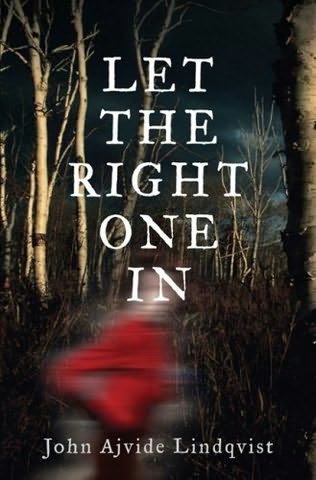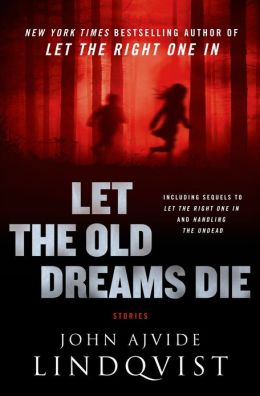Welcome back to the Short Fiction Spotlight, a weekly column dedicated to doing exactly what it says in the header: shining a light on the some of the best and most relevant fiction of the aforementioned form.
Today, because I consider the entire month of October to be fair game for scary stories—and it seems my friends at Tor.com do too—we going to take in a spine-tingling tale by one of my favourite modern horror authors.
Though it isn’t his best book by any stretch—that’s Little Star by a large margin—John Ajvide Lindqvist first found fame with his debut, known as Let the Right One In in English. A smart and startling antidote to the era’s sparkly vampires which I expect everyone with an interest in solid horror has at least heard of, Tomas Alfredson’s film, shot from a script by the author, struck me at least as far superior to the source material.
Years later, the coming of age of poor, put-upon Oskar under Eli’s undying eye became an exploration of Owen and Abby in Matt Reeves’ neat if unnecessary adaptation of the adaptation… but whatever their names and nationalities, their bittersweet tale remains the same. Let the Right One In is a love story, of course, and in “Let the Old Dreams Die”—the short Lindqvist’s first collection takes its title from—we get a glimpse of what happened to the young couple after the blood-curdling curtain came crashing down.
Lindqvist isn’t content, however, to simply pick up where he left off. Instead, he circles the fate of Oskar and Eli from another angle entirely. Like Let the Right One In, “Let the Old Dreams Die” is “a story about a great love,” but not necessarily the one we expect. Rather than return to Blackeberg and the bloody mess Oskar and Eli left there, it takes place many miles away, and many years later. The events of the book and the movie are at least long gone, if far from forgotten:
A lunatic in the guise of a vampire killed three children in the old swimming baths—which is now a pre-school—and then abducted this Oskar Eriksson. The newspapers wallowed in what had happened for weeks and weeks, and many of those who were around at the time can barely hear the word ‘Blackeberg’ without thinking of vampires and mass murder. […] Places acquire a stigma, which then sits there like a nail stuck in your foot for years on end.
Though they do have something truly crucial in common with Lindqvist’s classic characters, “Let the Old Dreams Die” revolves around a whole other loved-up couple. Stefan, for his part, is the ticket collector who punched Oskar’s travel pass on the self-same train he and Eli escaped in at the conclusion of Let the Right One In. “I was kind of the last person who definitely saw him,” he says, and as such, Stefan was interviewed by the detectives investigating the horrific incident at the swimming pool that forced the young lovers to leave the region.
Karin was one of these—these detectives, I mean. As a matter of fact, that’s how she and Stefan met, and promptly fell head over heels for one another: in the interview room of the local police precinct. But though their relationship went from strength to strength in the subsequent years, the murders that made them, in a way, are still unsolved. Neither Oskar nor Eli has been seen since, thus the investigation is at a dead end. Despite this, Karin resolutely refuses to let the case of her career go:
During her last few years at work she had been allowed to spend time on the Oskar Eriksson case only as a concession. When she retired it was done and dusted, something of a hobby for Karin and nothing more. She would still ring her former colleagues from time to time just to check in anything new had come in, but it never had. The case was dead. Or so everyone thought.

The unnamed narrator of “Let the Old Dreams Die” is a stoic public servant who grows old alone over the course of what is a ridiculously ambitious narrative, which aims to take us in approximately 30 pages from the early 80s of Let the Right One In through to late 2008, in addition to telling three distinct tales in that short space: his, Karin and Stefan’s, and of course Oskar and Eli’s.
In any event, he lives the larger part of his adult life a few doors down from Karin and Stefan, simply “bearing witness” to the beautiful thing between them to begin with. They grow closer, though, eventually becoming fast friends, and in the fullness of time they let him in on a few heretofore untold truths about the Blackeberg murders.
Time is what “Let the Old Dreams Die” is interested in, ultimately. Time and what we do with it—or indeed don’t, as in our narrator’s case:
Time neither flies nor flows nor crawls along. Time stands completely still. We are the ones who move around time, like the apes around the monolith in the film 2001. Time is black, hard and immovable. We circle around it, and eventually we are sucked into it.
We are, perhaps. But who knows? Part of what made Oskar and Eli so special was that they seemed set apart from that. It may be that they remain so to this day…
In the past, I’ve often talked about the undermining of uncertainty in the horror genre. To be brief, I find that what makes scary things scary is first and foremost their unknowableness. Alas, to explain is evidently an almost irresistible impulse; one altogether too many horror authors resort to—resulting in the characteristically crappy conclusions of Stephen King’s fiction, for instance—but one Lindqvist winningly resists in this stalwart epilogue of sorts to Let the Right One In.
“Let the Old Dreams Die” is no simple sequel, and if the truth be told, I don’t know that I’d have wanted one of those. Instead, what we have here acts as an affecting post-credits snapshot, and tells a tale that would be touching and tragic and timeless even if it didn’t have anything to do with the book and the movie that made John Ajvide Lindqvist’s name.
Niall Alexander is an extra-curricular English teacher who reads and writes about all things weird and wonderful for The Speculative Scotsman, Strange Horizons, and Tor.com. He’s been known to tweet, twoo.










